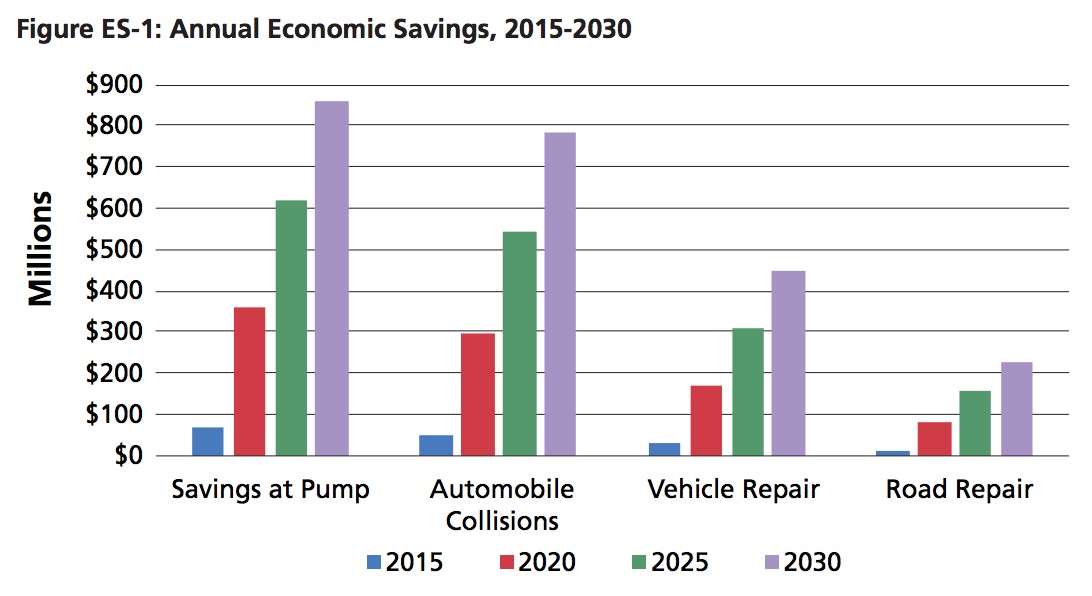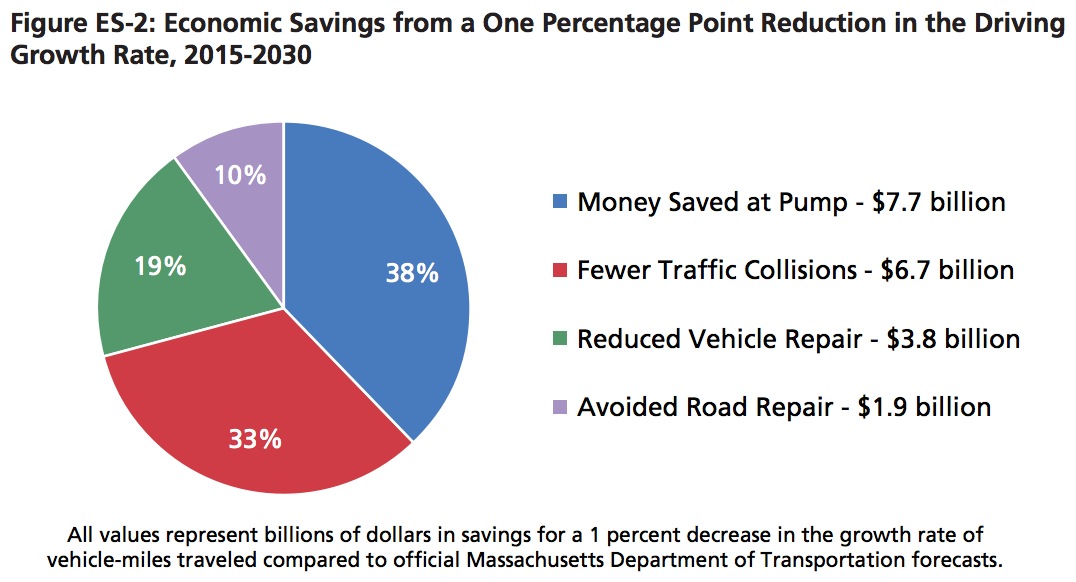MASSPIRG EDUCATION FUND
TRANSPORTATION FOR MASSACHUSETTS
Imagine two futures for the transportation system of the Commonwealth of Massachusetts.
In one, the air is cleaner. It is more convenient to use an improved public transit system and to drive less, so most households only own one car. There are fewer traffic jams because fewer people travel via automobile. There are more sidewalks and bike lanes, so many people walk or bike to their jobs, schools, and other destinations. People feel a little richer with extra money in their pocket, due to less spending on gasoline, parking, and auto maintenance. Bay Staters are healthier as a result of reduced pollution and increased physical activity.
In the second future, imagine the opposite trends. More cars are on the road, increasing traffic congestion, pollution, and emissions that cause global warming. Public transit is less convenient and less available because it is often broken down and hasn’t expanded with the economy. Walking and bicycling infrastructure remains unimproved. More collisions result in more deaths and injuries. We spend more filling up our tanks and repairing our vehicles more frequently, and the state spends more to repair the increased wear on roads. Bay Staters have less money, less time, and are less healthy.
The benefits of reduced driving are sometimes difficult to see, but hugely important. Many dramatic gains remain unrecognized because they are indirect, gradual, or result from avoided collisions and health problems that people don’t expect will happen to them in the first place. In our daily lives, it is difficult to assess the value of reduced costs that would have been borne by others or consequences that didn’t occur.
To make these benefits clear, this report quantifies the gains that would be enjoyed by the Commonwealth and its residents resulting from a one percentage point reduction in the growth rate of driving. Starting with the state’s official driving forecasts, a one percentage point reduction in the growth rate of driving from 2015 to 2030 would bring major economic, environmental, and public health benefits, with annual savings increasing each successive year.
By 2030, the combined savings would reach $2.3 billion annually, consisting of:
- $857 million less spent at the pump
- $785 million less spent on fewer automobile collisions and resulting consequences
- $446 million less spent on vehicle repair
- $224 million less spent on road repair
Figure ES-1 illustrates these annual benefits and how they grow over time. 
Tallying up the benefits that would result over the course of the next 15 years, the combined economic savings resulting from a one percentage point reduction in the driving growth rate below official forecasts are estimated to reach $20.1 billion, consisting of:
- $7.7 billion less spent at the pump
- $6.7 billion less spent on fewer automobile collisions and resulting consequences
- $3.8 billion less spent on vehicle repair
- $1.9 billion less spent on road repair
To put these sums in context, the total economic savings of a one percentage point reduction in the VMT growth rate from 2015 to 2030 is enough to provide any one of the following:
- Groceries for 180,455 American households for the entire period; or
- Daycare costs for 81,558 Massachusetts infants in daycare full-time for the period; or
- Mortgage payments for 92,746 average Massachusetts households for the period.
Figure ES-2 demonstrates where the savings come from. The greatest economic savings are expected to result from avoided gasoline expenses, followed by savings resulting from fewer automobile collisions, reduced vehicle repair costs, and avoided road repairs costs.
A one percentage point reduction in the vehicle-miles traveled (VMT) growth rate would also result in 267.6 million fewer gallons of gas consumed annually by 2030, and 2.6 billion fewer gallons of gas consumed cumulatively over the course of the next 15 years. This is the equivalent of every household in Massachusetts saving nearly a thousand gallons of gasoline over the period.
About the MASSPIRG Education Fund
www.masspirgedfund.org
MASSPIRG Education Fund is a consumer group that stands up to powerful interests whenever they threaten our health and safety, our financial security or our right to fully participate in our democratic society.
About Transportation for Massachusetts
www.t4ma.org
Transportation for Massachusetts is a diverse coalition of organizations working together to create safe, convenient, and affordable transportation for everyone. We advocate for transportation funds to be spent fairly and responsibly, for transportation decisions that are transparent and accountable, and to ensure that our transportation network has sufficient resources to meet tomorrow’s needs all throughout the commonwealth.
Tags: MA, Massachusetts, MASSPIRG Education Fund, T4MA, Transportation for Massachusetts







 RSS Feed
RSS Feed